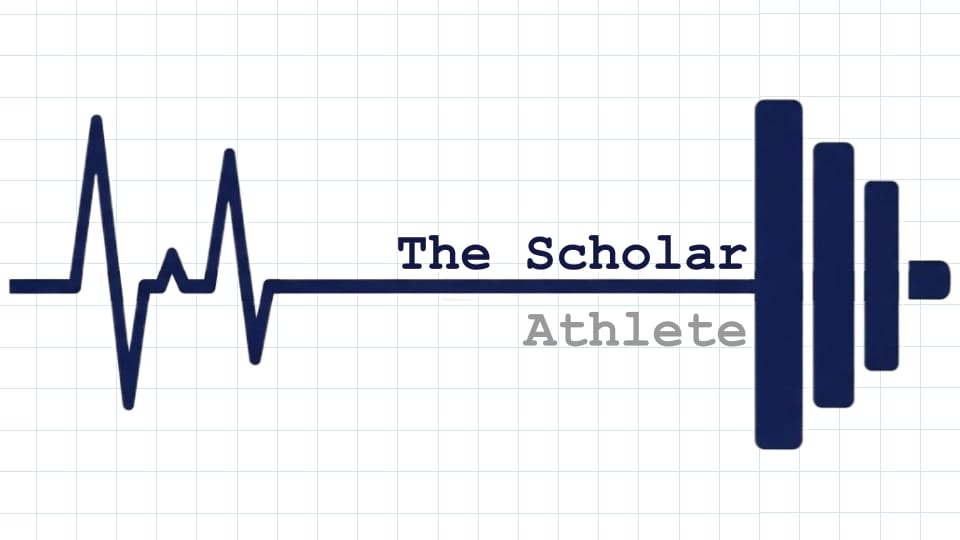- The Scholar Athlete
- Posts
- Monday Motivation - New American Marathon Record
Monday Motivation - New American Marathon Record
Set by a runner who embraces powerlifting

Beyond The Workouts
The Benefits of Powerlifting for Runners
Conner Mantz is as specialized of an athlete as it gets. You don’t set an American Record in the marathon without going all-in on the event. And over the weekend, Conner did just that — finishing the Chicago Marathon in under 2 hours and 5 minutes.
Conner is one of several alumni from the BYU distance running program that are dominating the American distance running scene. One of the highlights of this program is its focus on hitting the weight room. These distance runners don’t just spend time there, they squat, deadlift, and bench high intensity weight for low reps. They’re building strength.
To be clear, Conner just set the American Record because he’s run thousands upon thousands of miles over decades of his life. He’s a distance runner, not a gym bro. But, his focus on powerlifting does play an important role in this training — a role that many programs overlook.
Lifting for strength (think 3-5 reps of a weight that you could do 5-7 times before failing) builds resilience for runners. Resilience to injury, resilience to race conditions and hilly courses, and resilience to keep legs pounding into the pavement late into a marathon. It also builds top end speed, which makes running at a marathon pace feel easier. Increasing strength makes you a better runner.
Increasing muscle size doesn’t necessarily do the same thing. Bigger muscles do give you the foundation for increased strength, but they also create more weight to carry around while running. At some point, the benefits from increased strength are literally outweighed by the drawbacks of bigger muscles.
Yet, when runners do get into the weight room, they are most likely to lift a lower weight for higher reps (think reps of 8-12). This is the same thing that body builders do to get as big as possible. Runners want to be like powerlifters, not body builders. They want to be strong but lean, not bulky with suboptimal strength.
I lift for benefits that extend beyond running performance. I’m not going for an American Marathon record, so I’m primarily focused on my well-being and longevity. This means I sacrifice some running performance in favor of more muscle mass and higher total strength. That’s the trade off that hybrid athletes have to make.
But fundamentally, Conner Mantz and I are both lifting for the same thing — to be as strong as possible at a given bodyweight. That’s performance-based lifting. If someone focused on being as light and aerobically fit as possible finds value powerlifting for strength, we all will.
Training Context
My training schedule has been messy, but that doesn’t mean I’m being set back.
I’ve been traveling the last several weeks without much control over my schedule. This has forced me to make trade offs with running mileage and lifting volume. (It also played into me missing a couple newsletters…)
I missed several long runs, and my running volume dropped considerably. But I got all of my key lifts in, and I ran as much as made sense. This week, I should be able to get back into a full running-volume week. But with my lower running volume, I seized the opportunity to use fresher legs to lift some heavier weight in my squat and deadlift sessions.

My running volume dropped the last several weeks, but lifting intensity slightly increased.
Training Details
What Happened Last Week
36 Miles Ran
13,410 lbs lifted with upper body
15,760 lbs lifted with lower body
290 lbs e1RM Squat
375 lbs e1RM Deadlift
270 lbs e1RM Bench
174 lbs Body Weight
I missed my long run, and I had to consolidate my lifting sessions from a typical 4 to 2. This means I dropped all of my accessory lifts.
My running miles went: 6,10,8,6,6,0,0
Bench Sessions Monday and Thursday: 5×5×225lbs
Squat Session Monday:
5×3×265lbs
Sumo Deadlift Session Thursday:
5×5×295lbs
Goals For This Week
Run 52 miles
Bench: 5×5×225lbs Tuesday and 3×3×245lbs Friday
Squat - 2×3×265lbs, 3×3×275lbs
Deadlift - Sumo 5×3×315 lbs
Training Tips
The importance of proper lifting form
When lifting for top-end strength, proper lifting form is essential for preventing injuries. When possible, get critiques from other people at the gym. There are a lot of great tutorials on YouTube. Start with low weights and slowly build up. When doing light weights, that’s a wonderful opportunity to emphasize proper form and train the muscles on how to lift properly.
Go Do More
Personal Bests vs. Being The Best
I’m always humbled when I watch a record get broken. It’s a reminder of how much more potential humanity has to accomplish great things, but it’s also a reminder of how far away I am from accomplishing those great things.
I think there can be a freedom that unlocks greater performance once you allow yourself to pursue your own path and not “the best path”. Instead of trying to be the best in the world to ever do something, we can all spend a lifetime trying to be the best version of ourselves at the present moment.
Is there something that you’ve been limiting yourself in doing because you know you will never be the best at it? Can you do something today that will make you better at it than you were yesterday? If so, do it and celebrate your improvement!
Real Training means learning from the best.
Reply